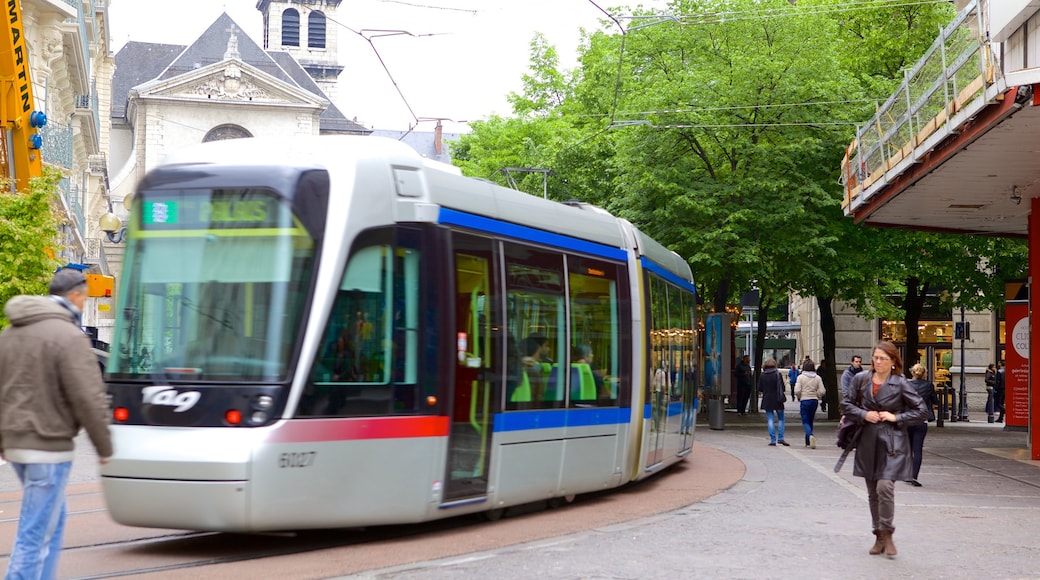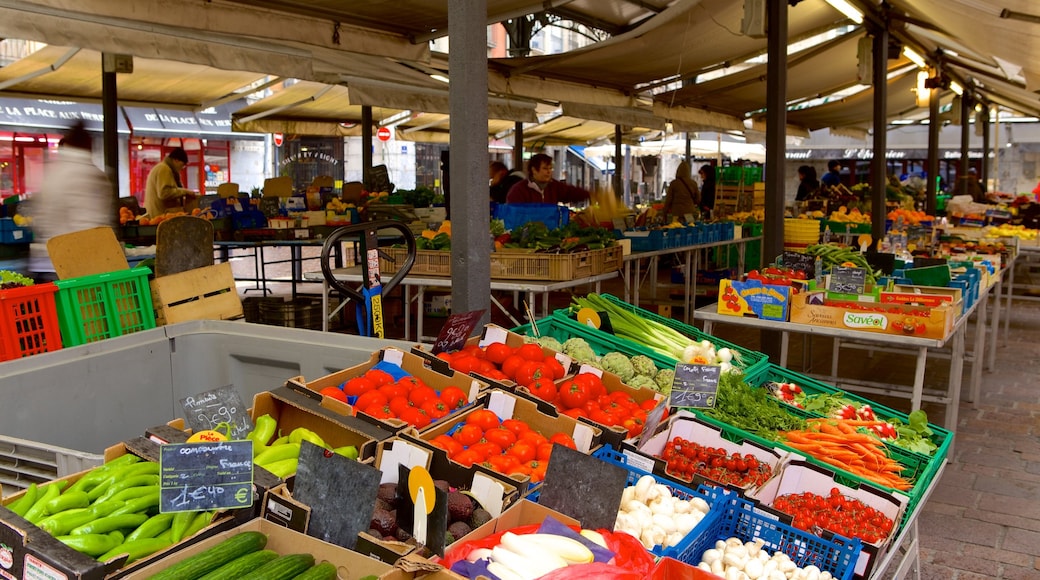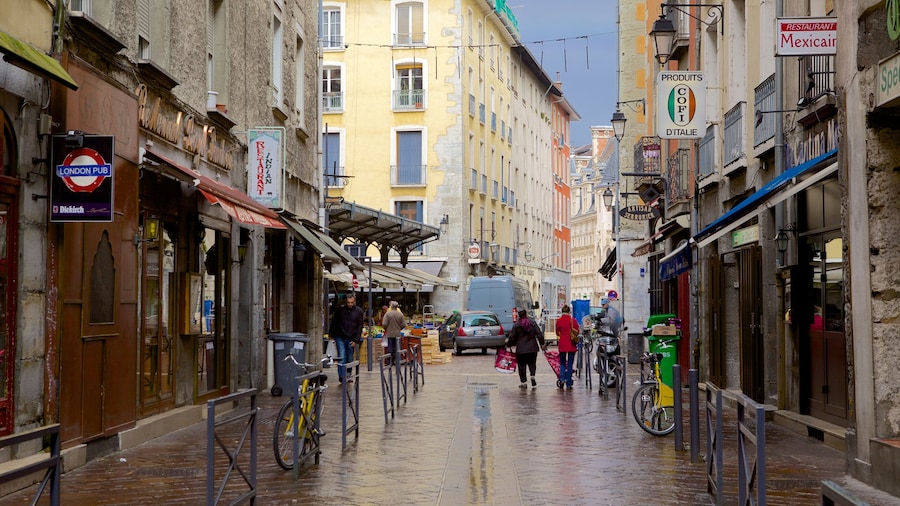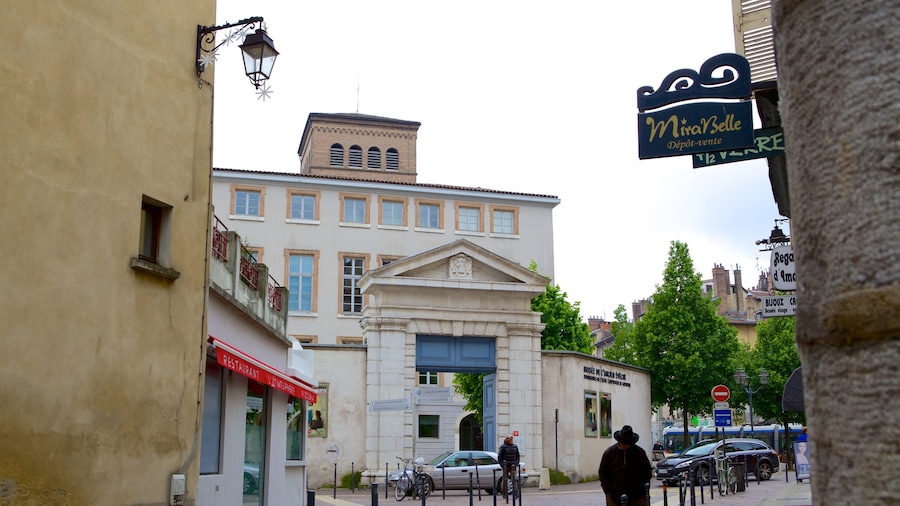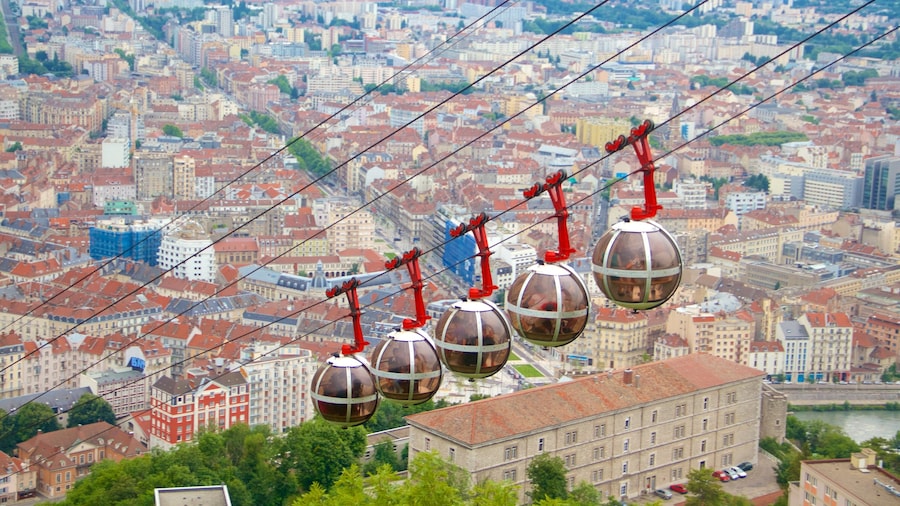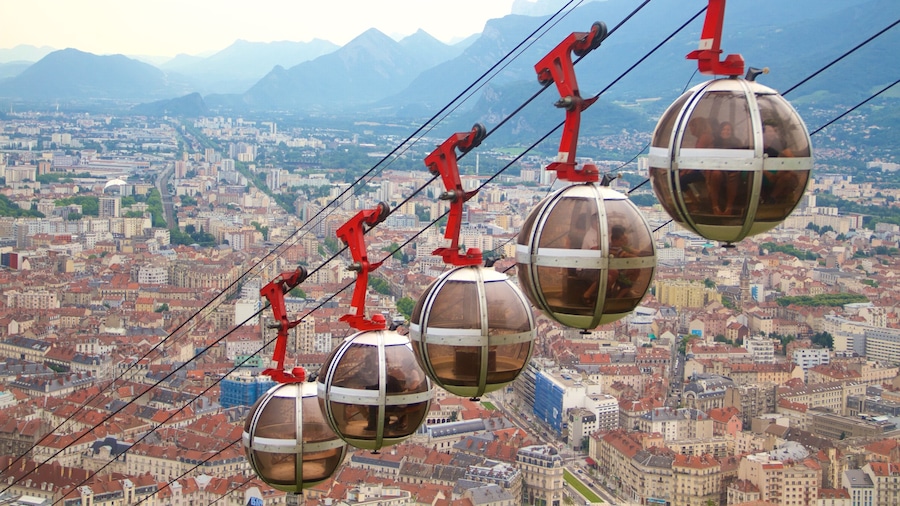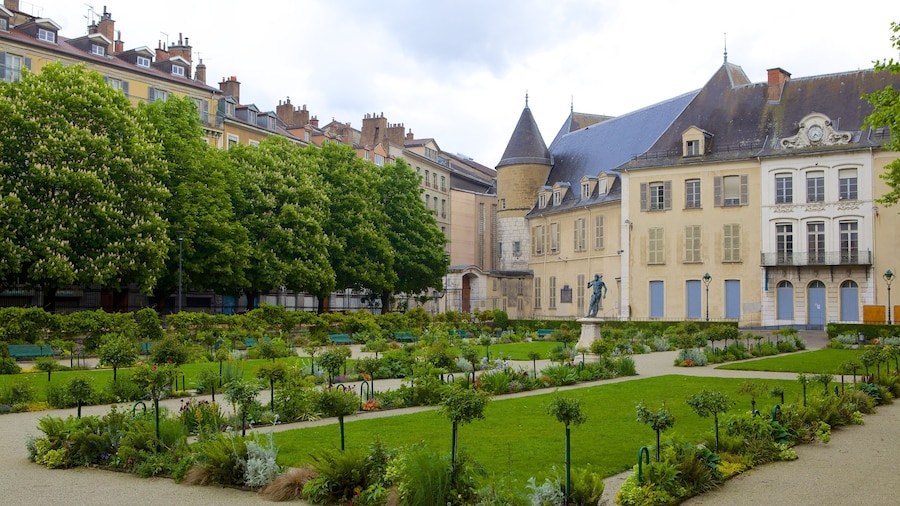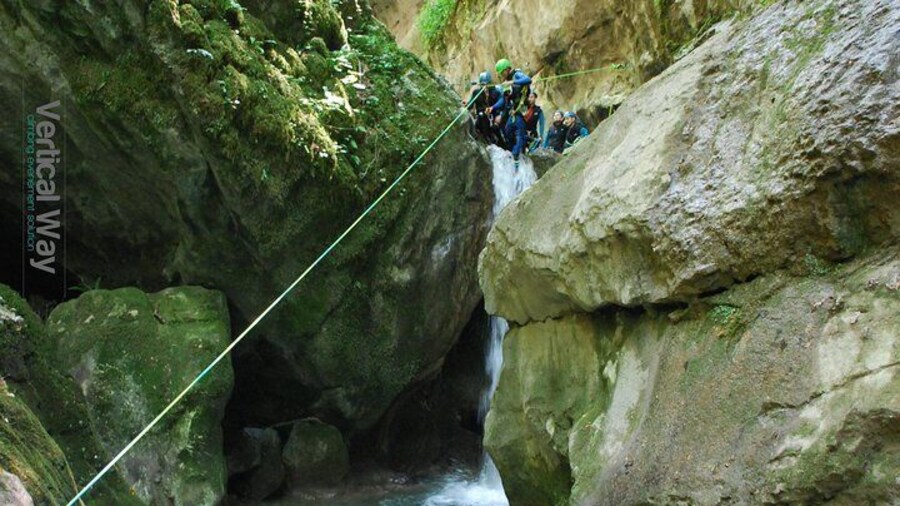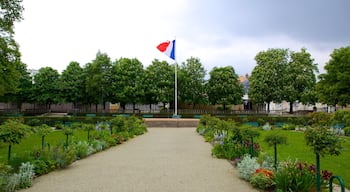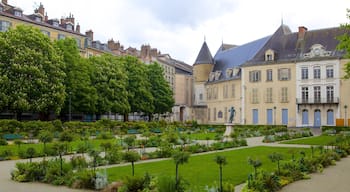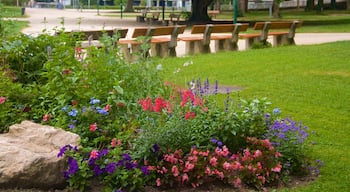Wander the lively streets of this charming area of Grenoble, where very little has changed since the 16th century.
Grenoble’s Old Town is the heart of the city, home to squares and marketplaces that have acted as meeting places for centuries. The Old Town contains numerous examples of beautiful architecture reflecting its 2,000 years of history. Look for the medieval buildings, stately mansions, crumbling Roman walls and old churches as you stroll through the narrow lanes of this neighbourhood.
Dating back as far as 43 B.C., Grenoble was founded as a Gallo-Roman settlement, then known as Cularo. Beginning in the 3rd century, this area became the administrative capital of the city and the Gallo-Romans erected protective walls around the neighbourhood. At the beginning of rue Lafayette, look for the ruins of this original wall. As you continue to walk through the Old Town, try to spot bronze medallions embedded in the streets designating the location where the full wall once stood.
Gaze up at the tall steeple of St. Andrew’s Church, also known as Collégiale Saint-André. Piercing the skyline above the surrounding buildings in Saint André Square, this landmark church is almost impossible to miss.
Don’t miss Place Grenette, one of the city’s main squares since the 17th century. Here, you’ll find a stone fountain depicting cherubs and dolphins, carved by 19th-century sculptor Victor Sappey.
Spend time admiring the former palace of the Dauphinois parliament. This palace’s Gothic and Renaissance façades make it one of the city’s most distinctive buildings.
Stop for a coffee at Café de la Table Ronde, the second-oldest café in France, built in 1739. It’s said that famous 19th-century thinker Stendhal enjoyed sitting at this very café to write.
One of the best times to visit Grenoble Old Town is during the morning, when a busy farmers market is held at Place aux Herbes every day except Monday. The Old Town can be quite busy on Saturdays, when locals and tourists come out to enjoy its many shops and cafés.


